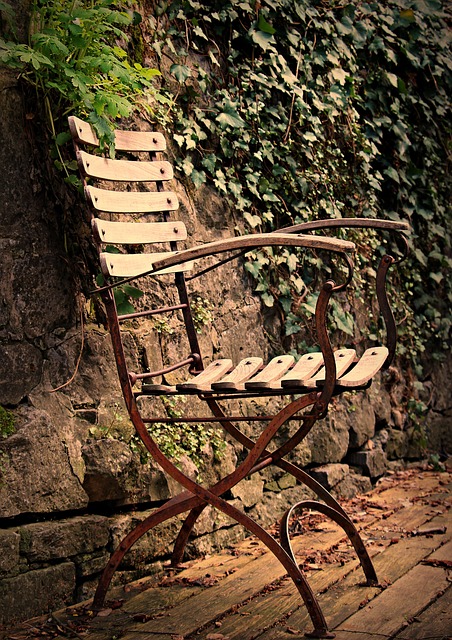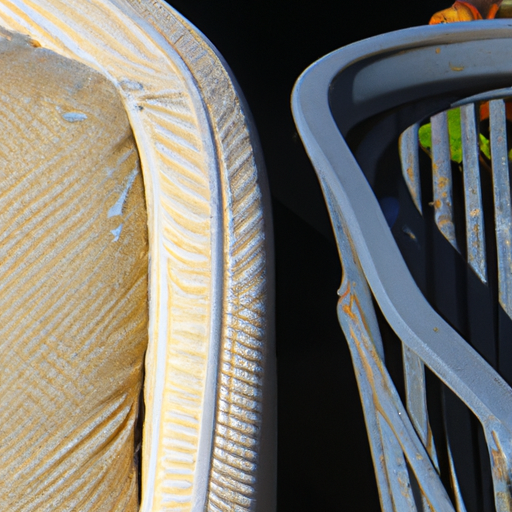The blog post 'Cleaning Tips for Outdoor Furniture' serves as a comprehensive guide for maintaining the longevity and aesthetics of your outdoor furniture. It equips readers with practical tips and tactics to clean and maintain various types of outdoor furniture materials effectively. It highlights the importance of regular cleaning and the role it plays in enhancing the durability of furniture.
Why is Regular Cleaning of Outdoor Furniture Important?
Regular cleaning of outdoor furniture is essential for several reasons. First, exposure to the elements can cause dirt, dust, and debris to accumulate on the surfaces of the furniture. This not only affects the appearance but can also lead to the deterioration of the materials over time. Secondly, outdoor furniture is often exposed to various environmental factors such as rain, sun, and wind, which can cause mold, mildew, and discoloration. Without regular cleaning, these issues can worsen and become difficult to remove. Lastly, outdoor furniture is frequently used for activities such as dining, entertaining, or relaxation, which means it is exposed to food and beverage spills. If not promptly cleaned, these spills can attract pests and lead to stains or odors. Therefore, regular cleaning is crucial to maintain the longevity, appearance, and hygiene of outdoor furniture.
An image showing the visible difference between a regularly cleaned outdoor furniture piece and a neglected one.
What are the Different Methods to Clean Various Furniture Materials?
When it comes to cleaning outdoor furniture, different materials require different cleaning methods to ensure their longevity and appearance. Here are three common furniture materials and the recommended cleaning methods for each:
- 1. Wood:
Wooden outdoor furniture adds a natural and rustic charm to any outdoor space. To clean wooden furniture, start by removing any loose dirt or debris with a soft brush or cloth. Next, mix mild dish soap with warm water and use a sponge or soft brush to gently scrub the surfaces. Avoid using harsh chemicals or abrasive cleaners as they can damage the wood. Rinse the furniture thoroughly with water and allow it to dry completely before applying a protective sealant or wood oil to maintain its natural beauty. - 2. Wicker:
Wicker furniture is popular for its durability and stylish appearance. To clean wicker furniture, start by vacuuming or brushing off any loose dirt or dust. Next, mix a solution of mild dish soap and water and use a soft brush or cloth to gently scrub the surfaces. Pay attention to the crevices and corners where dirt can accumulate. Rinse the furniture with water and allow it to dry completely. For added protection, you can apply a coat of furniture wax or spray a UV-resistant sealant. - 3. Metal:
Metal outdoor furniture, such as aluminum or wrought iron, is known for its strength and durability. To clean metal furniture, start by removing any loose dirt or debris with a soft brush or cloth. Next, mix a solution of mild dish soap and water and use a sponge or soft brush to scrub the surfaces. For stubborn stains or rust, you can use a metal cleaner or a mixture of vinegar and water. Rinse the furniture thoroughly and dry it completely to prevent any water spots or rusting. To maintain its shine and protect against corrosion, apply a coat of metal wax or a rust-resistant spray.
How to Tackle Stubborn Stains on Your Outdoor Furniture?
Stubborn stains on outdoor furniture can be a real eyesore, but with the right approach, they can be effectively tackled. Here are some tips to help you remove stubborn stains and restore the beauty of your outdoor furniture:
1. For fabric cushions or upholstery, start by blotting the stain with a clean cloth or paper towel to absorb as much of the stain as possible. Avoid rubbing the stain, as it can spread and make the situation worse. Next, mix a solution of mild detergent and warm water and gently scrub the stain using a soft brush or sponge. Rinse thoroughly with water and allow it to air dry. For tougher stains, you can use a fabric stain remover or a mixture of vinegar and water. Always check the manufacturer's instructions for cleaning recommendations specific to the fabric.
2. For plastic furniture, which is prone to staining from food or beverages, mix a solution of mild dish soap and warm water. Use a sponge or soft brush to scrub the stained area, applying gentle pressure. For stubborn stains, you can try using a paste made of baking soda and water, applying it to the stain and letting it sit for a few minutes before scrubbing. Rinse thoroughly with water and allow it to dry completely.
3. For metal or glass surfaces, such as patio tables or aluminum frames, a mixture of vinegar and water can be effective in removing stains. Apply the solution to the stained area and let it sit for a few minutes before scrubbing with a soft brush or cloth. Rinse thoroughly with water and dry the surface to prevent water spots or streaks.
An illustration demonstrating the process of removing tough stains from outdoor furniture.
"Prevention is better than cure" – Protective Measures for Your Outdoor Furniture
Protecting your outdoor furniture is essential to extend its lifespan and maintain its appearance. By taking preventive measures, you can minimize the risk of damage and the need for extensive cleaning or repairs. Here are some tips to help you protect your outdoor furniture:
- 1. Cover it up:
Invest in high-quality covers specifically designed for outdoor furniture. These covers will shield your furniture from direct sunlight, rain, dust, and other elements that can cause damage. Make sure the covers fit properly and are securely fastened to prevent them from blowing away in strong winds. - 2. Store it indoors:
If possible, store your outdoor furniture indoors during harsh weather conditions or when not in use for extended periods. This will provide maximum protection against the elements and reduce the risk of damage and deterioration. If indoor storage is not an option, consider using a storage shed or a designated area with a roof to protect the furniture. - 3. Use protective coatings:
Apply protective coatings to your furniture to create a barrier against moisture, UV rays, and other environmental factors. For wooden furniture, use a sealant or outdoor wood oil to prevent water absorption and minimize the risk of warping or cracking. For metal furniture, use a rust-resistant spray or paint to protect against corrosion. Regularly reapply these coatings to maintain their effectiveness. - 4. Clean and maintain regularly:
Regular cleaning and maintenance are vital to keeping your outdoor furniture in good condition. Remove any debris, dirt, or leaves that accumulate on the furniture, as they can cause stains or promote mold and mildew growth. Follow the manufacturer's instructions for cleaning and maintenance, and inspect the furniture periodically for any signs of damage or wear.
Cleaning Tips for Outdoor Furniture:
| Furniture Material | Cleaning Method | Drying Method | Maintenance |
|---|---|---|---|
| Wood | Vacuum the surface with a soft brush attachment and use a mild soap and water solution to spot clean | Allow to air dry | Apply a protective coating to prevent fading and wear |
| Plastic | Wash with a mild soap and water solution | Allow to air dry | Apply a protective coating to prevent fading and wear |
| Metal | Wipe with a damp cloth and use a mild soap and water solution to spot clean | Dry with a soft cloth | Apply a protective coating to prevent rusting |
| Fabric | Spot clean with a mild soap and water solution | Allow to air dry | Apply a protective coating to prevent fading and wear |
In conclusion, the care and maintenance of outdoor furniture should not be overlooked. With the right methods and techniques, you can ensure that your furniture remains in optimal condition, thereby making your outdoor living spaces more appealing and inviting. Remember, regular cleaning is an investment that ultimately saves you money in the long run by extending the life of your outdoor furniture.



